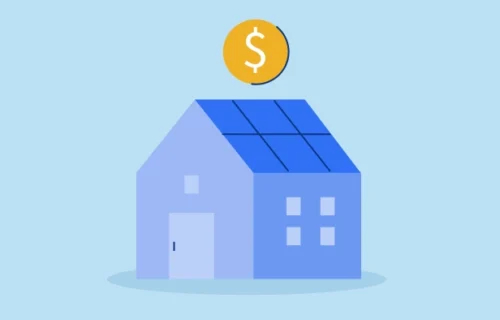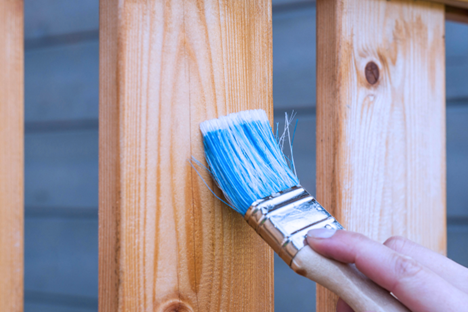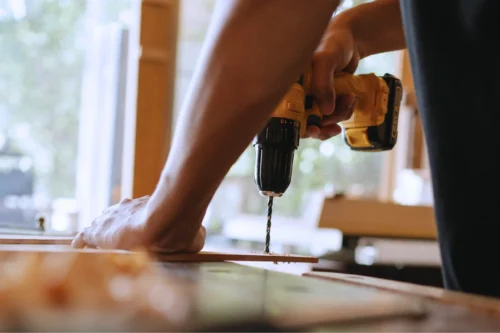
Connect with a Lima One expert today!
If you’d like to know more about this topic or see how it applies to your project, let’s talk.
Residential Real Estate Investment Trends to Watch in 2021
Residential Real Estate Investment Trends to Watch in 2021
If you’re like most people, you’re probably ready to bid adieu to 2020. A once-in-a-century pandemic led to quarantines, massive furloughs and layoffs, and economic turbulence forced businesses and investors of every shape and size to reevaluate their strategies, pivot and often pivot again, with little certainty of how or when things will settle down or what normal will look like on the other side.
In the real estate market, however, some trends have emerged that should continue into 2021. Here’s a breakdown of what real estate investors and brokers need to keep in mind as they chart their course into the new year.
The Move to the Suburbs
In the housing market, the pandemic has renewed a trend away from densely populated urban centers and toward more spacious dwellings in the suburbs. This trend is so significant that it is driving headlines in the industry and beyond.
Zillow released research in August showing that rent prices are increasing in suburban areas while stagnating in urban centers. Researchers hypothesized that “suburban rentals may now be more appealing for renters who no longer need to commute or are temporarily unable to enjoy some of the amenities of urban living.”
A Zillow survey from a few months earlier indicated that renters started considering moves based on the work-from-home freedom from commutes as well as requirements of a designated room to serve as an office. HousingWire put it this way—the home office is no longer a luxury.
When you consider the COVID-caused acceleration of working from home and kids doing virtual learning, it’s no wonder that The New York Times is touting an unprecedented “surge that is unlike any in recent memory” out of New York City and into the suburbs. This isn’t just a New York trend—it’s happening in big cities and concentrated downtowns nationwide.
Despite double-digit unemployment rates, the stock market has fully rebounded and continues to flirt with all-time highs, and both existing and new home sales have shown us what a true V-shaped recovery looks like. While we are still in the thralls of a pandemic, housing is one of the brightest segments of the economy, with incredibly low interest rates and buyer preferences demanding far more single family properties than are currently on market. The trend of moving to the suburbs will be a key factor in keeping this demand strong as we enter 2021.
The Need for New Construction
In most markets, home values have held strong thus far through the vast unemployment and furloughs created by the pandemic. Part of the reason is that supply remains far lower than the demand we just discussed, keeping prices strong. This tight inventory has been exacerbated by delays in home building that were caused initially by quarantines. Many of our builder clients experienced 2-3 months where they couldn’t get on job sites or couldn’t get permits or inspections, so they’re playing catch up while trying to capitalize on current market conditions marked by a strong need for new construction.
Home builder confidence bottomed out in April but rebounded quickly, resulting in new permits and housing starts rebounding quickly as well. In a normal year, fall typically means a slowing trend of new home starts and sales, but as in so many other ways, 2020 bucks the normal trend. According to the National Association of Realtors, “the strong summer sales are an indication that the pandemic merely delayed rather than obliterated the spring market… There are no indications that contract activity will wane in the immediate future, particularly in the suburbs."
Land, labor, and lumber prices continue to soar, and are certainly adding to the cost of a newly built house. According to a recent Fortune article, the price of lumber is up 134% year over year, adding an additional $14k cost to a new house on average. But although prices continue to climb, they are not enough to offset demand and the surge of families moving to the suburbs/rural communities. New home starts in July were at their highest level since February and are showing no signs of falling off.
Many real estate investors are pivoting to new construction builds instead of searching for needle-in-the-haystack cosmetic flips in which they can invest. Even truly distressed properties are tough to find. Experienced investors who know how to manage construction budgets and general contractors see ground-up builds as the best way to provide the kind of returns they want.
Evictions and Foreclosures on the Horizon
A lot of unknowns remain about how the massive job losses during the pandemic will impact rent and occupancy rates over the long term. Many tenants have missed payments, with regulations assuring them that they can avoid evictions for a short time. But impossible to know right now how many of these eviction moratoriums will be extended, and for how long, and in which markets. Election results on the national, state, and local level could lead to major changes this fall.
One thing is certain—many investors, whether they own rental homes or multifamily properties, can’t go without collecting rent forever. And it’s unreasonable to expect that homeowners can avoid paying their mortgages in perpetuity. So at some point, renters will be forced to catch up on rent, and homeowners will be forced to catch up on mortgages. When this happens, after regulations expire and government intervention subsides, it's likely we'll see significant spikes in evictions and some buying opportunities with potential foreclosure increases.
This trend is a double-sided coin for investors. Those who are looking to buy see opportunity (more on that later). But those who own rentals may face the prospect of evicting tenants, or of having to keep their portfolios afloat while missing rental income from a portion of the units. Make sure you look at both sides of the coin as you devise your battle plan for 2021.
Tight Inventory
Inventory for single-family homes was tight before the pandemic, and the demand from those fleeing to the suburbs—combined with record-low interest rates for homebuyers—means that demand far outstrips supply. According to the National Association of Realtors in August, housing inventory in the top 50 U.S. metros declined 38% year over year. This means that investors will have to be more creative than ever in finding good investment properties.
Investors are pros at using creative marketing strategies to uncover potential buying opportunities before they reach the MLS, and in current times we’ve heard of investors even going back to grassroots door-to-door canvassing to network and learn who might be interested in selling their house. Investors must not only be creative to expand their targets, but they must also consider rehab-to-rent properties or even build-to-rent projects, instead of simply buying existing housing stock.
The good news for SFR investors is that if they are able to acquire a good property, the trend toward the suburbs and rental homes means that rent rates should remain solid for a long time to come. So investors can move quickly with confidence when they find the right property to add to their portfolios, which means knowing they have the cash or available debt exposure to make a deal as soon as they’re confident the numbers pencil out. One way to prepare—ask your lender if they have a pre-approval program or line of credit that you can get qualified for to ensure you have ready access to capital when needed.
The fix-and-flip and fix-to-rent investment strategy boomed out of the 2008 financial crisis, and many veteran investors are poised to capitalize if a similar surge of foreclosures happen. This means many investors who believe that the end of mortgage deferments and prolonged unemployment could open buying opportunities in the months ahead are keeping powder dry to be ready. With home prices continuing to climb, demand at all-time highs, and under 4% of mortgaged properties with negative equity, the prospects of a massive buying opportunity like we saw for investors in 2008 seems unlikely. But a September report from CoreLogic showed a significant spike in delinquent mortgages, so depending on the duration of the pandemic and prolonged unemployment for many millions, it’s certainly possible that distressed sale increases could follow.
Changes in Multifamily
While the housing market remains strong, there are significant questions about commercial real estate moving forward. How will work-from-home trends affect office rentals? Will restaurants, retail, and hospitality bounce back, or will closures create wide swaths of vacancies?
Overall, multifamily properties have been more stable than other commercial types, and while the move to the suburbs may affect demand somewhat, it shouldn’t cause demand to completely crater. While some renters may struggle to get current after moratoriums, a new renter class could emerge from former homeowners who must sell to avoid evictions. Solid affordable housing in multifamily units will remain in demand. Forbes put it this way: “Working-class families with median incomes are the backbone of our economy and always need a place to live."
While we may see a slowdown in Class A, city-center multifamily projects, investors will still find opportunity for value-add multifamily workforce housing among Class C properties, or for stabilizing a Class B property. Stringent analysis of local markets and available renters will be crucial, though, in light of the uncertainty caused by 2020.
Partners Matter
As investors craft and execute their strategies for 2020, they need partners they can trust. In times of uncertainty, you need appraisers who will show up, contractors who will get the job done on time, and a lender who can close with speed and certainty. So take this opportunity to review your Rolodex and make sure you have the right people in place.
Lima One Capital is the lender that can help you, whatever your 2021 real estate investing strategy may be. Contact us today to get preapproved as a buyer or broker so that we can help you with your important fix and flip, rental property or portfolio, multifamily, or new construction investments now and in the new year.
Subscribe for More Insights
Get the latest industry news & Lima One updates.









